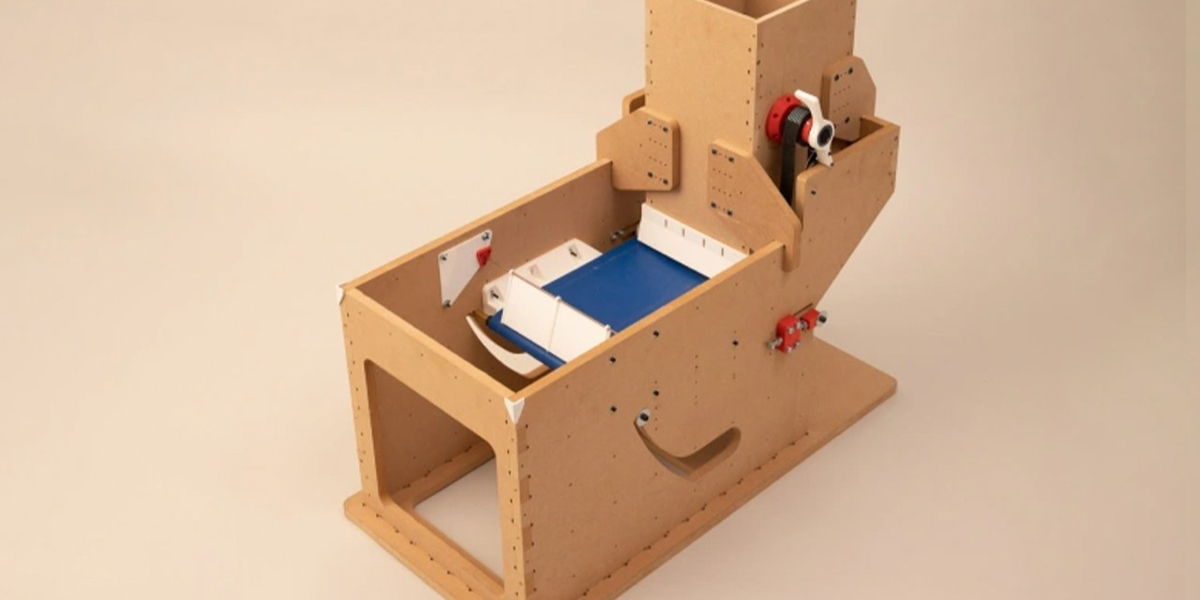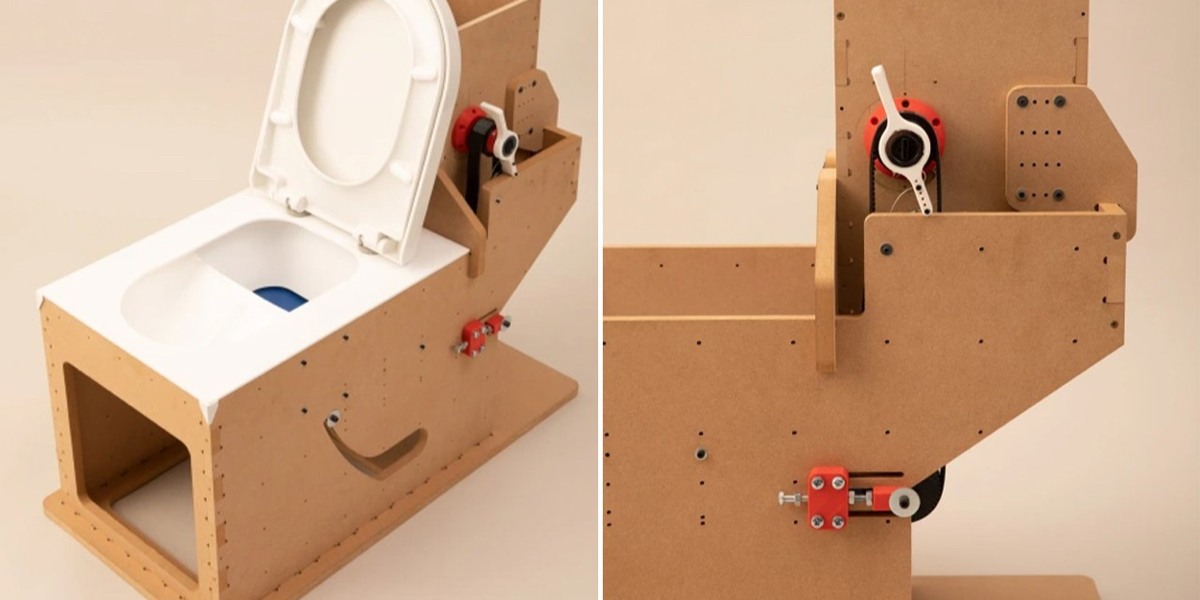AÑO
2023
CATEGORÍA
Hogar
OBJETIVOS
Salud y bienestar, Agua limpia y saneamiento
PAL. CLAVE
toilets, sanitation, toilet
PAÍS
United Kingdom
CRÉDITOS
Archie Read
LINK
https://www.yankodesign.com/2022/08/03/this-off-grid-sustainable-toilet-aimed-at-rural-areas-flushes-with-the-help-of-sand-a-conveyor-belt/
Sandi
Toilet designed for rural areas that flush by sand
How does it work?
Sandi features three main components – a mechanical flush (for scenarios with no electricity), a basic conveyor belt to move the excreta away (in case of no water supply), and a divider placed inside the toilet bowl which separates the waste streams so that they can be repurposed as fertilizers.
If a home consists of seven family members, the liquid container would need to be emptied every two days, whereas the container for solids after every four days. The urine can be instantly used as an independent fertilizer, whereas the feces can be buried to be utilized as compost a month later.
Why is it needed?
In a world, where sanitation is considered a luxury and not a basic necessity, 500 million people are still defecating in the open. There are definitely a lot of other off-grid toilets available on the market these days, but what sets Sandi apart from them is that it flushes. Although these other toilets do not require water to function, they do not flush ‘at all’, making the entire affair an unsafe and uncomfortable experience.
How does it improve life?
Although Sandi is still a concept, if transformed into a feasible reality, it could provide inhabitants of such locations with a solution that is not only sustainable but also safe and dignified. Reed envisions Sandi becoming a reality and being priced at $74 per unit. He doesn’t believe in charging exorbitant amounts for a product aimed at people’s safety and sanitation, since it is not a luxurious item, but a basic amenity.





